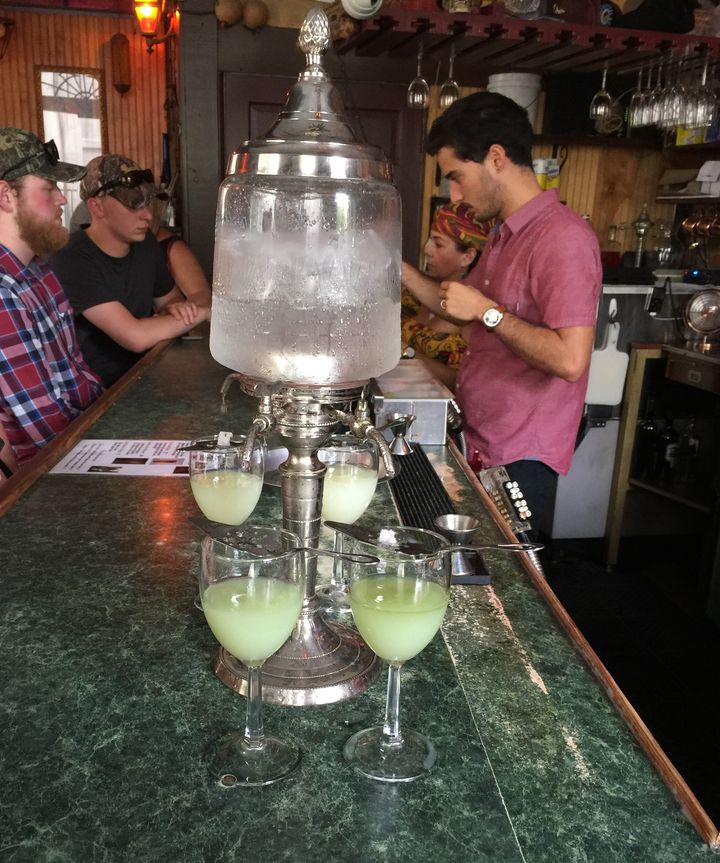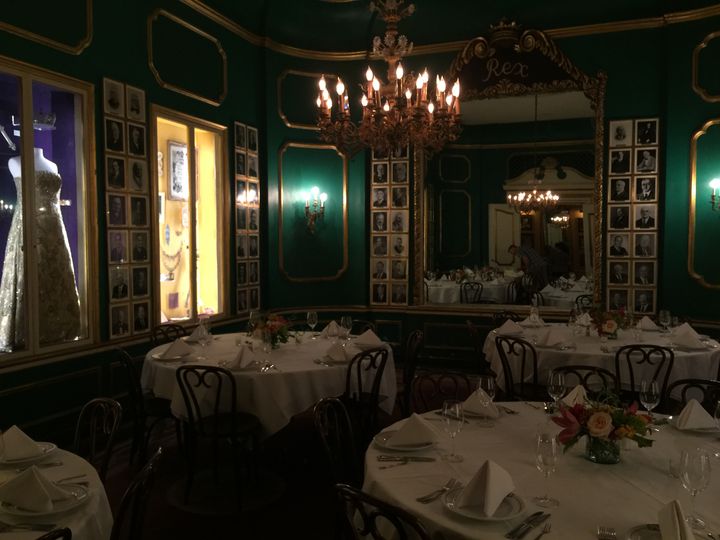
The Grasshopper at Tujague’s
New Orleans beckons in a way unlike other cities in the United States. There is something otherworldly about the place that is difficult to convey. And yet, at the same time, there is an intense realism that is palpable when you dwell among its inhabitants. The diverse heritage and rich multi-ethnic fabric that underpin this magnificent city offer a lesson in cultivating possibility. The recent story of New Orleans is one of creating success out of adversity. Still on the mend from Katrina, the Crescent City manages to surpass expectations and offer us the unique gems that are her heritage.
What better way to unravel the mystery that is New Orleans, I thought, than to explore the cocktail heritage of this famously decadent city. As someone who turned 18 in the late 1970’s, Louisiana will always have my respect for being the last state standing against federal mandates to raise the drinking age to 21. I looked at several options to further my knowledge and decided on the “New Orleans’ Classic Drinks Tour” offered by New Orleans Culinary History Tours. Our adventure began at Tujague’s, New Orleans’ second oldest restaurant according to our guide Annette, and home of the “Grasshopper,” a drink that most likely predates Prohibition but gained fame during that time for its ability to masquerade as a dessert. Lore has it that Tujague’s owner Philibert Guichet created the Grasshopper—with equal parts crème de menthe, crème de cacao, and cream—for a cocktail competition in New York. Tujague’s stand-up bar and its ornate French mirror invoke Manet’s “Un bar aux Folies Bergère.”
From Tujague’s we made our way to the Pirates Alley Café and Olde Absinthe House, a spot with a long history of pirates, priests, and intrigue and also a hint of Faulkner, but not, in fact, where absinthe was invented. We were, however, able to savor the notorious concoction in a locale that revered the beverage prior to and after its banning. Our guide recounted the fascinating history of absinthe’s rise to acclaim based on its curative powers and subsequent decline when dementia, mass murder, and countless other horrors were attributed to the power of the “green fairy.”

Absinthe
The Hermes Bar at Antoine’s was our next stop. Antoine’s, founded in 1840, is officially New Orleans’ oldest restaurant in continuous operation. The Hermes Bar, originally a dining room, now serves customers traditional drinks in the classic style. While the Sazerac is not necessarily traceable to this particular spot, it makes sense to drink New Orleans’ trademark cocktail in its oldest restaurant. The drink’s complicated history is longer than I can recount here, and the ingredients are hardly commonplace: Sazerac Rye Whiskey, Herbsaint, Peychaud’s Bitters and lemon peel. I absolutely detest dark liquors such as bourbon and whiskey, but this may be my favorite cocktail ever. It seems I’m destined to return to New Orleans often. After our drinks were served, we had the opportunity to visit several of Antoine’s many exquisite dining rooms.

Antoine’s
Our final destination was Arnaud’s French 75 bar. I must admit that given all we had already seen and tasted, the place and the drink didn’t have to do too much to impress. And yet... this bar is pure elegance, an intimate encounter as it was meant to be. Logically we ordered the classic French 75, one of New Orleans’ signature cocktails, reinforcing the cultural ties of the city to France, where in all likelihood the French 75 originated. Drinking this classic cocktail in the iconic bar that has received so many accolades, from James Beard to Esquire magazine, we reveled in the decor and vibe as guests rolled in on a Saturday evening. We peeked into one of the original dining rooms at Arnaud’s just as service was set to begin, causing us to marvel at how this gem has weathered events like Prohibition in the past and Katrina more recently.
Many have observed that in the aftermath of Katrina, the stage was set for a cocktail renaissance in New Orleans. After visiting some of the oldest establishments in the city and tasting the historic elixirs that hearken to a more distant past, it would seem that the cocktail has been around perhaps as long as New Orleans itself. In the Crescent City, one could say, if life gives you lemons, make a cocktail. The vibrancy, optimism, and atmosphere of celebration in the Big Easy make it such an inspirational place to visit. Given the current climate in much of the rest of our country, we should perhaps take note of New Orleans’ success in creating good from adversity.

A fitting end to a weekend in New Orleans: listening to jazz at The Spotted Cat
